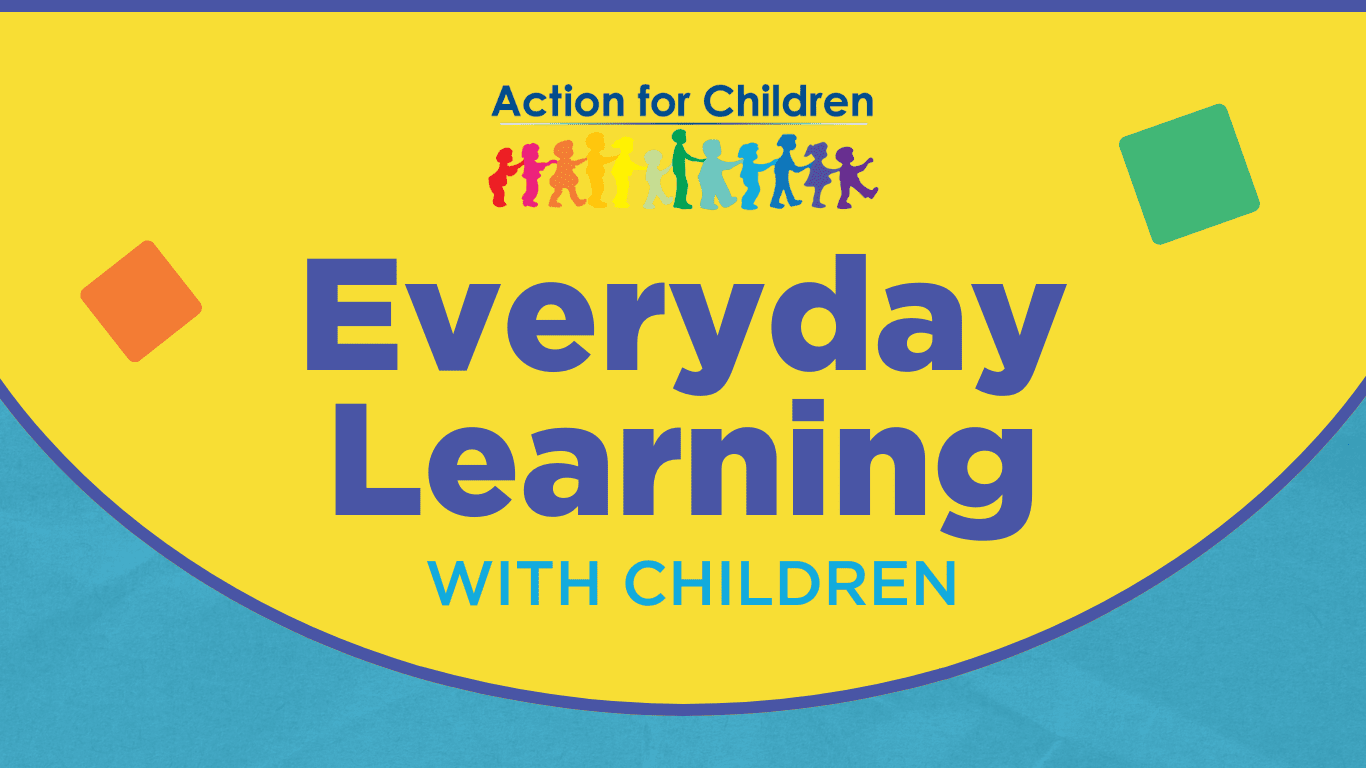Everyday Learning: Helping Children Learn from the World Around Them
09/27/24

Children are constantly learning from the world around them, whether we realize it or not. These learning opportunities for young children are everywhere – at home, at school, at the grocery store, in the car, on a walk, on a playdate… the list goes on. As a parent or caregiver, you can be a big part of this by being aware of everyday learning opportunities and capturing them with your child! Here are five age-appropriate ways you can help young children learn from the world around them.

- Provide Hands-On Experiences
Sensory activities like playing with sand, water, or play dough are great ways to engage young children! Experimenting with different materials such as building blocks or items found in nature helps develop children’s fine motor skills and an understanding of textures, shapes, and properties. Give infants and toddlers old newspapers or junk mail to tear, and older child can make a kitchen band with pots and spoons.

- Take the Learning Outdoors
Aside from the benefits of fresh air and Vitamin D, the great outdoors is a wonderful training ground for children to be observant and learn from their surroundings. Try visiting a park or taking a nature walk in your own backyard. Any natural space – no matter how small – is likely to have wonders if you look closely. Point out different plants, animals, colors, or natural phenomena you see. Use open-ended questions to get your child thinking, such as “What do you notice?” or “Why do you think these leaves are on the ground, but those leaves are still in the tree?” Ask your child to predict what she’ll see underneath a rock before you lift it up. You could even try making up a story about what might happen on your walk!
Pro Tip: If you are in central Ohio, check out all that the Metro Parks have to offer for children of all ages here: Family & Kids – Metro Parks – Central Ohio Park System

- Involve Children in Daily Routines
One of the best things about everyday learning is that you can easily incorporate it into your daily routine! Whether you’re cooking, gardening, shopping, or doing laundry, you can use those moments to involve your children and practice different skills. For example, try counting out your fruits or vegetables at the grocery store with your little ones or asking your older children to find fruits or vegetables that begin with specific letters or sounds, such as “Can you find a fruit that starts with the /b/ [“buh”] sound?”. While doing laundry, children can help with simple tasks like matching socks or sorting items by the family member they belong to. Even toddlers can help set the table. You might ask, “How many spoons do we need for you, me, and your sister? One, two, three – three spoons. You can put these three spoons at our spots at the table.” And for more adventurous families, activities like baking or planting seeds can be great opportunities for children to work on their counting and math skills, learn a little about science, and even start to practice responsibility.

- Read Books That Reflect Diverse Backgrounds
Choose books that explore different places, people, and cultures in engaging ways. As children grow up, they will inevitably encounter other children and families from all different walks of life. Incorporating a diverse array of books can help them begin to understand the world around them at an early age. As you read, encourage children to ask questions and make connections to their own or others’ experiences. It is healthy for children to notice both differences and similarities. You can encourage this by saying things like, “Your skin is a little lighter than her skin. And you both have curly hair!” For book recommendations, visit Action for Children’s resource library and use the “book lists” filter. For educators and caregivers, we also recommend our “Culturally Responsive Teaching” video series on incorporating diverse materials in learning settings.

- Encourage Imaginative Play
Incorporate materials in your home or classroom like blocks, puzzles, or dress-up clothes that allow children to create their own worlds and scenarios. You’ll often see that the scenarios they make up mimic what they see in the world around them, allowing them – and you! — to better understand their experiences. This type of play develops cognitive and social-emotional skills and further encourages their curiosity!
Stuck on how to jumpstart these everyday learning opportunities with your children? Download our free question prompts for inspiration!
Author: Christiana Sallard, Marketing & Communications Coordinator at Action for Children
Contributor: Dr. Kat Glenn-Applegate, Director of Child Care Education Initiatives at Action for Children and Abigail Alexander, SPARK Home Visiting Program Manager
Action for Children is the local child care resource and referral agency for central Ohio, and is committed to assuring quality early learning experiences for all children. Our services focus on transforming the lives of children by supporting the everyday heroes who most influence our children’s early growth; care givers, educators, parents, and guardians. Learn More.